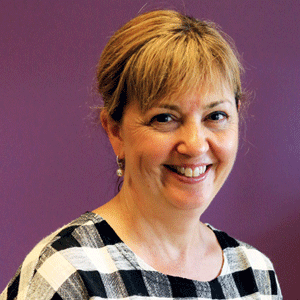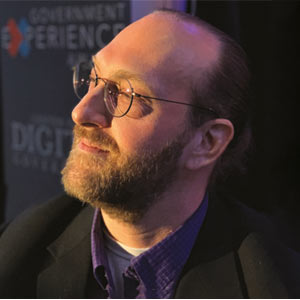THANK YOU FOR SUBSCRIBING

Transformative Change in a Change-Averse Environment
David W. Dodd, VP-IT & CIO, Stevens Institute of Technology


David W. Dodd, VP-IT & CIO, Stevens Institute of Technology
Higher education institutions have been called ‘loosely coupled organizations’ for good reason. Somewhere between the polarized positions which numerous constituencies hold regarding technology, is a somewhat navigable course to institutional acceptance and effective use of technology—at least in terms of degrees. Simply stated, if you really want to understand technology in higher education, you have to do so through a contextual view. Context is essential, because it’s only through this approach that true understanding of a situation is possible. And, I can think of no situation where this is more the case than technology in higher education. In the end, higher education institutions have long exhibited a love—hate relationship with technology and digital media.
Examples of this abound, and are all too familiar to educational leaders themselves. For example, many faculty members with humanist and neo-Marxist philosophical foundations (and there are many) hold that technology runs counter to interpersonal relations and human actualization, and that it is inherently a repressive force. On the other side of the equation, students who have grown up with technology and who are rightfully called ‘digital natives’ have integrated technology into every aspect of their lives and careers. Because they are loosely coupled organizations with governance systems that have been widely compared to chaos, it is extremely difficult for any higher education institutions to have a unified strategy regarding the effective use of technology in areas such as academics and administrative operations.
“Bring Your Own Apps is beginning to have an enormous impact on higher education, particularly those forward-thinking institutions that are adapting it early”
It is little wonder that higher education is widely recognized as among the last sectors to embrace new technologies and the benefits they offer. However, through all of this, the simple fact is that technology has been reshaping education. The pressures of reduced state support, increased competition between both public and private institutions, heightened governmental oversight, and numerous other factors have led to a new willingness by some institutions to embrace technology as a strategic force. Not surprisingly, these institutions are reaping substantial benefits relative to competitors. And students are ultimately the greatest beneficiaries of these changes.
Today, every area of higher education operations is dependent upon technology. While the “teaching naked” movement may still be alive and well among some number of faculty, the simple fact is that technology is ubiquitous, essential, and irrevocable. Students today bring multiple communication and computing devices with them to campus—and they expect to be able to use them in their coursework as well as to access campus services. And since the vast majority of institutions are tuition-dependent, student enrollment equates to institutional survival.
It would be impossible to consider all the technologies influencing higher education today because they are far too numerous, and woven together too inseparably.
BYOA
Bring Your Own Apps is beginning to have an enormous impact on higher education, particularly those forward-thinking institutions that are adapting it early. In the past, institutions prescribed both the devices and the applications that students used in their coursework. This subsequently gave way to the acknowledgement of Bring Your Own Device (BYOD) programs. But the rich proliferation of high quality “apps” available on a wide range of devices and operating systems, whether locally installed or as Software as a Service (SaaS), is changing the way students take notes and do their assignments. Laptops are still common on campuses, but so are Chromebooks, tablets, smartphones, and numerous other devices that are regularly used to complete and submit assignments. As a result, prescribed devices and software are increasingly giving way to specified formats for submitting assignments. For students, this is simply an extension of how they do go about their lives—using technology seamlessly and adeptly. For institutions, there is less need for computer labs, expensive campus agreements for software, laptop checkout programs, and the like. Institutions on the leading edge of this today are adapting guidelines for students that simply specify the formats in which students should be prepared to submit their assignments. The trend by software companies in making their applications both cloud-based and platform-independent is growing substantially.
Consumer-Driven Cloud Storage
As is the case with many developments, cloud computing was heavily hyped for several years. This was no less true for providers that actually had little real understanding of cloud computing. Concomitant with this, most companies offering cloud storage were doing so only as an extension of hosted applications. Today, cloud storage for consumers is much more widely available, and the linkage to required use of hosted applications is disappearing. Numerous companies such as Box today offer consumers online storage with no strings attached, and either free or at very reasonable prices. This advance is of fundamental importance to true mobility, platform-independent apps, and the diminished market for personal computers.
Big Data in Sociological Applications
Data-driven research has made possible the detection of significant patters in very large volumes of data. This approach, which has come to be known generally as “Big Data”, has contributed substantially to knowledge in such areas as defense, aerospace, health sciences and pharmaceuticals, weather and climate, and clean energy. However, Big Data techniques are becoming increasingly important to institutions in such areas as student recruitment, academic success and student retention, and fundraising.
Cloud-based Administrative Systems
True cloud-based administrative systems began to appear within the last few years. Previously, software providers had marketed ‘hosted’ applications, but this represented nothing new in the way of system architectures. Further, colleges and universities are notoriously late in adapting new technologies and the majority has not advanced past campus-based client-server systems. The emergence of companies like Workday represents the most advanced stage of true cloud-based systems. Such systems are much faster and cheaper to deploy, offer robust capabilities, and enable institutions to reallocate operational resources to more strategic purposes.
Personalized Learning Environments (PLE)
The PLE concept is based on emerging research that has shown students to be more engaged and more academically successful by utilizing a range of technologies to construct their own online personalized environments. Traditionally, most institutions have provided a heavily prescribed environment with a fixed set of tools and within a prescribed configuration—a rigid approach that is based on a ‘one-size-fits-all’ approach. Robust technologies that include private cloud provisioning, Web 2.0, social media, and presence technology are now being integrated in a way that enables students to create their own personalized set of strategies and tools that enhance their learning and understanding.
These are only a few of the tectonic changes that are acting to bring about transformation in the use of technology in higher education. And, these technologies and others are giving early adopters significant competitive advantages relative to other institutions. But most importantly, these technologies are also enhancing student learning outcomes and therefore supporting the fundamental mission of higher education.
Weekly Brief
I agree We use cookies on this website to enhance your user experience. By clicking any link on this page you are giving your consent for us to set cookies. More info
Read Also
Artificial Intelligence - Myths And Truths
Sustainable Future through Innovative Technology Solutions
The Future Relies on Augmented AI
Digitalization with the use of digital technologies/Improving business through digital technologies
How Marco's Pizza Leaned On Technology To Succeed Amid The Pandemic By Quickly Pivoting To Contact-Free Delivery And Curbside Carryout
Bunnings Diy Digital Transformation
For a Smarter City: Trust the Data, Ignore the Hype
Smart Community Innovation for the Post Pandemic





















